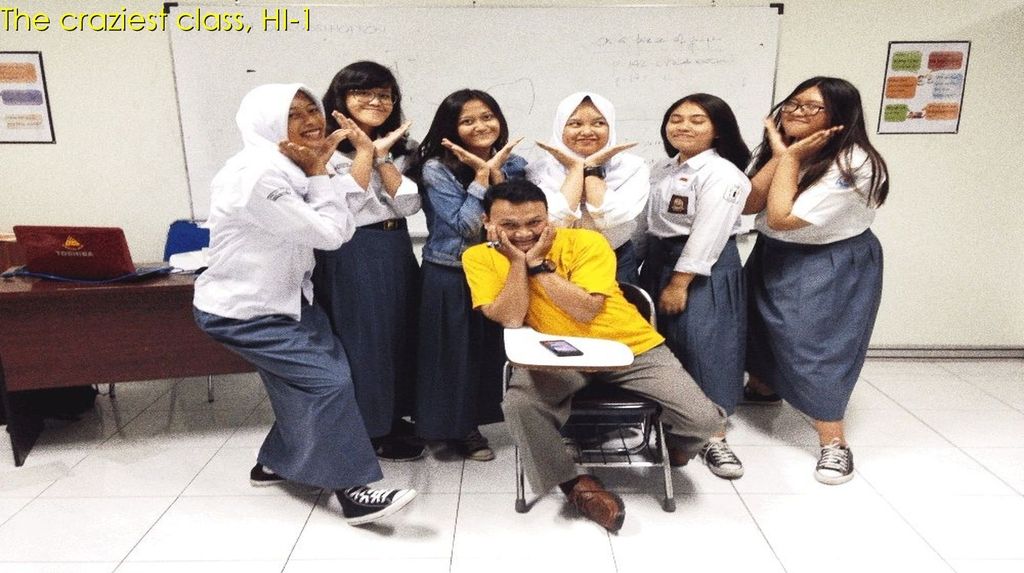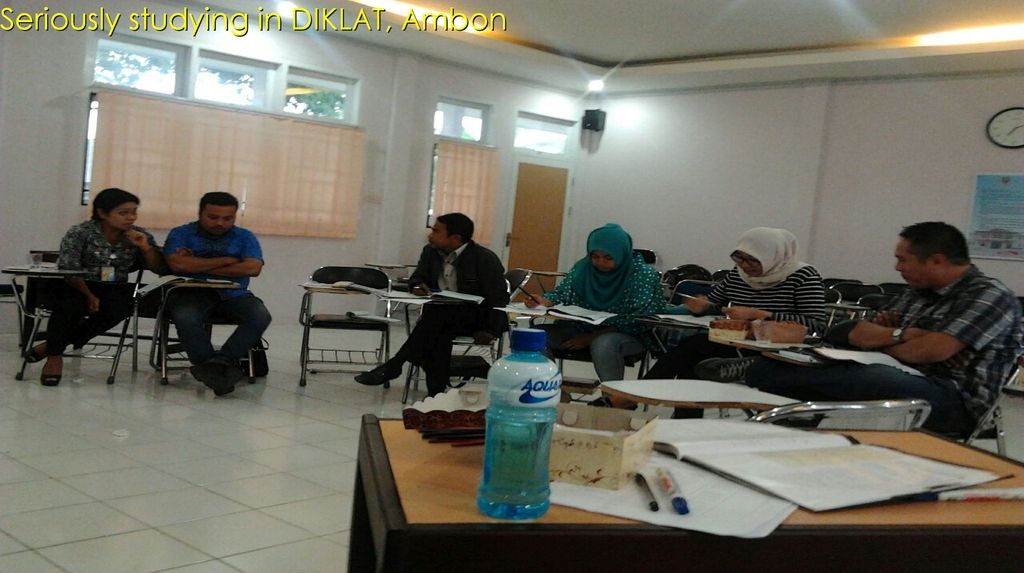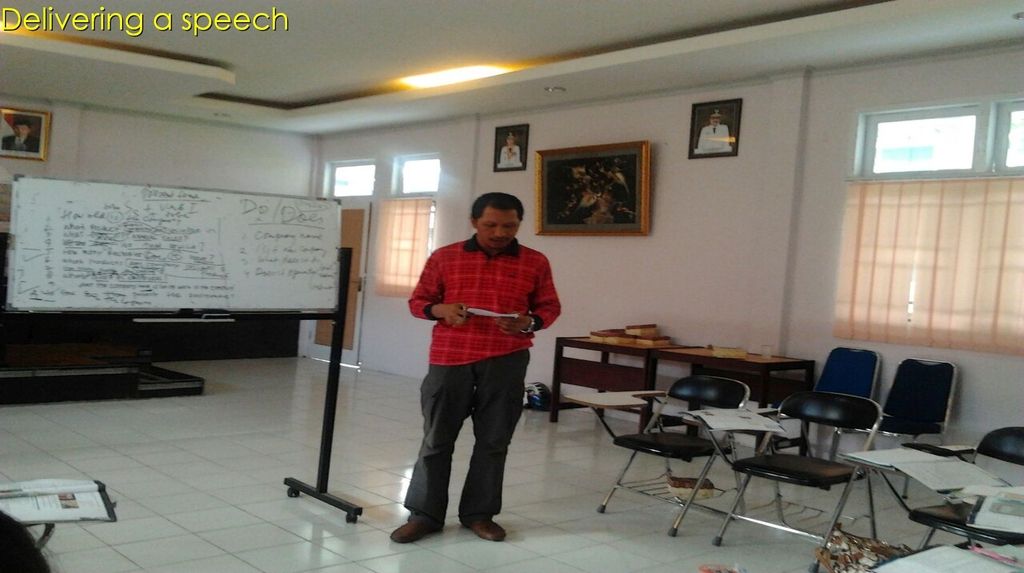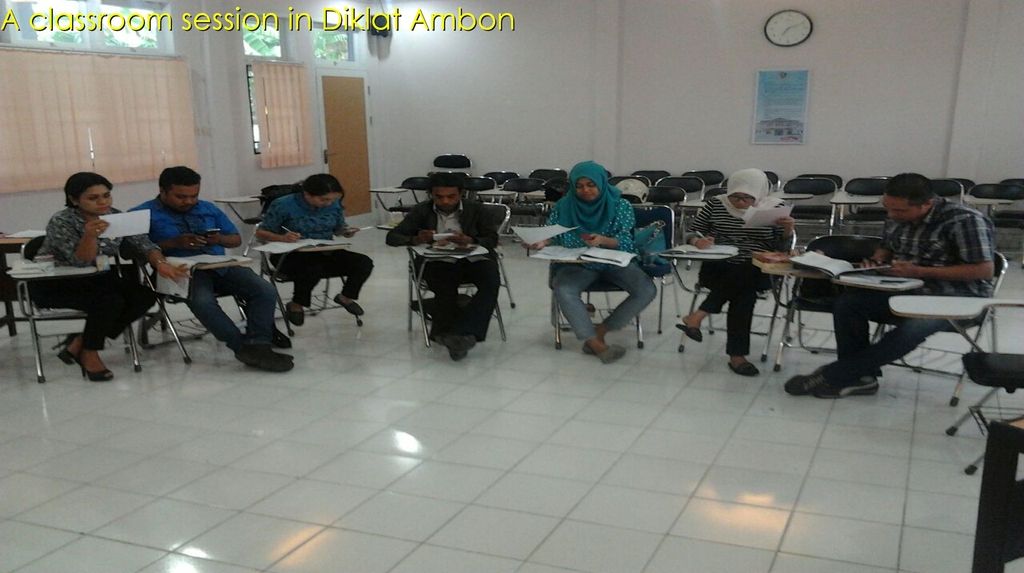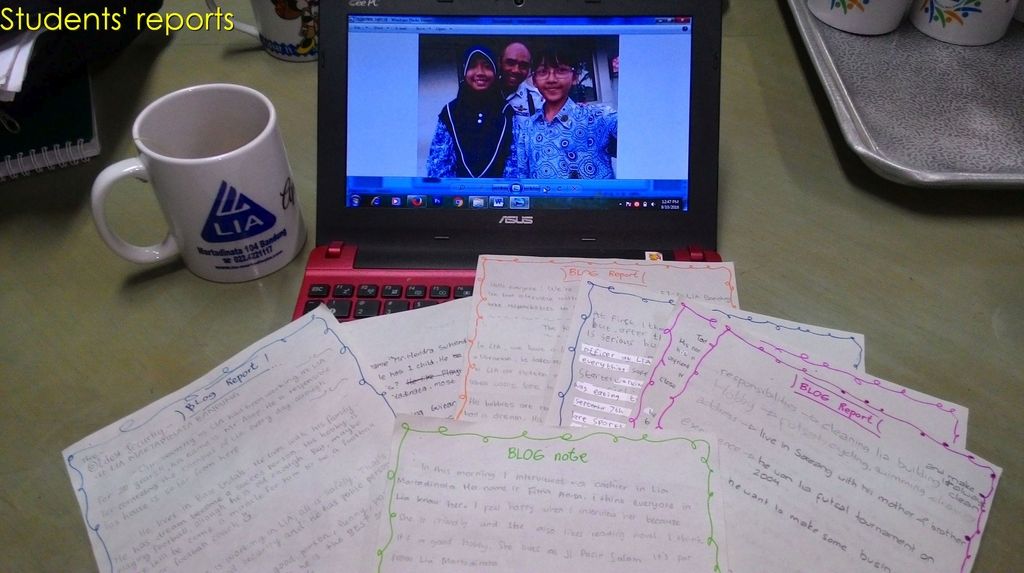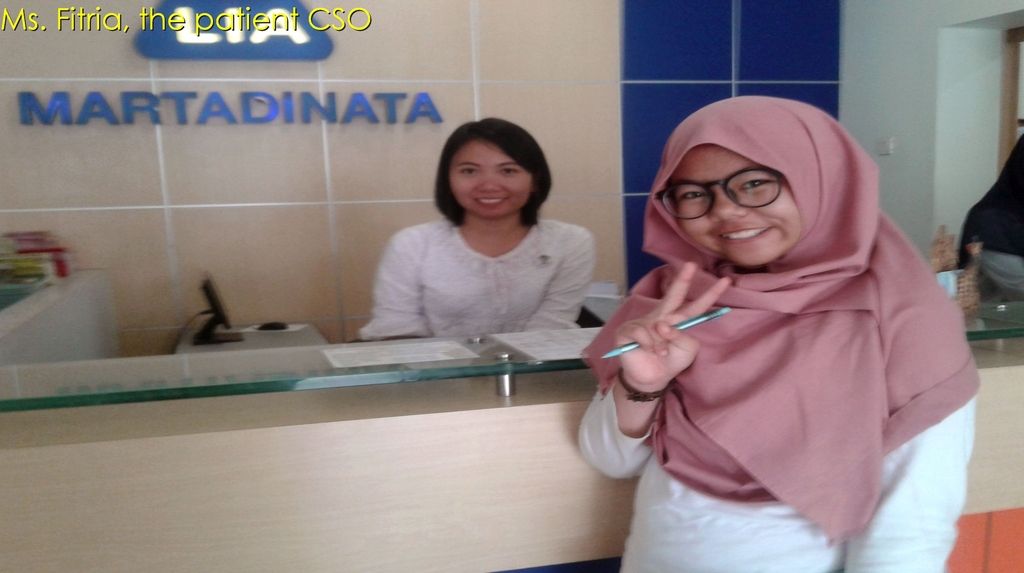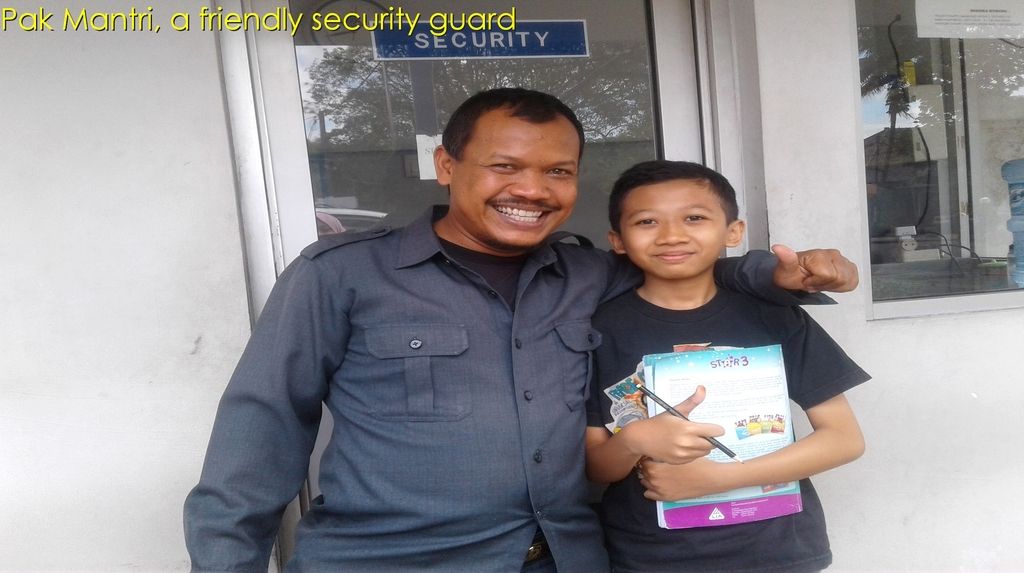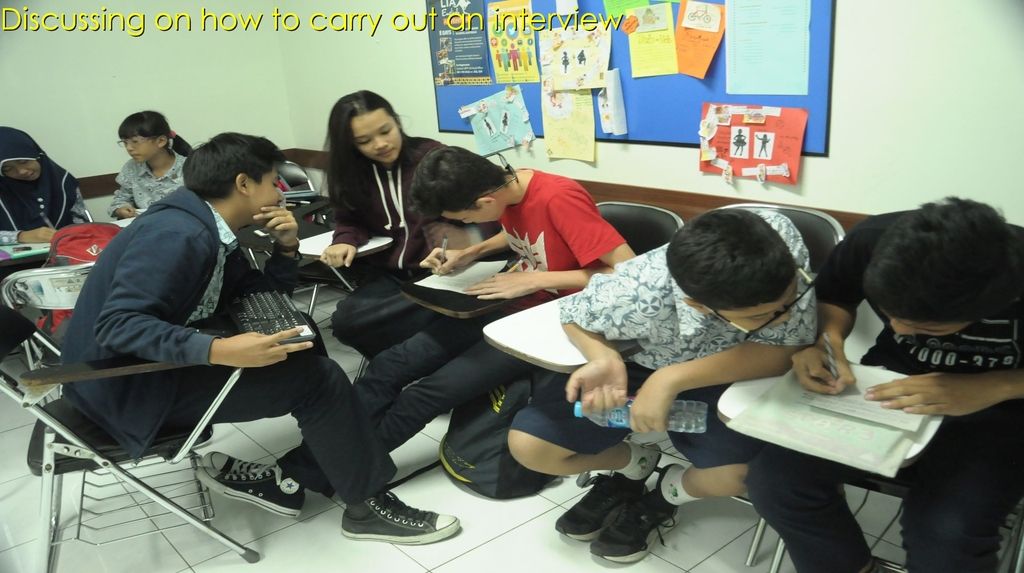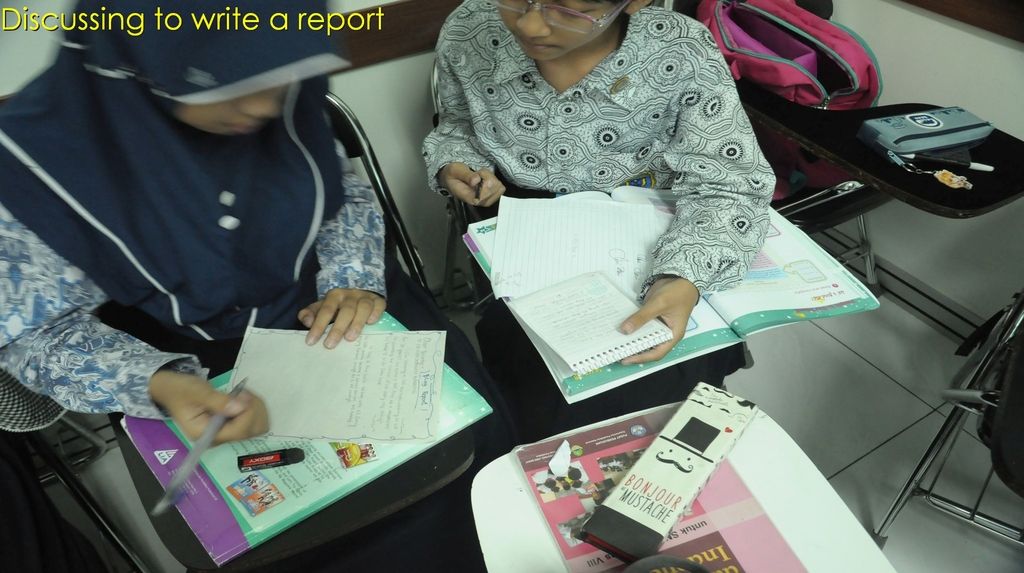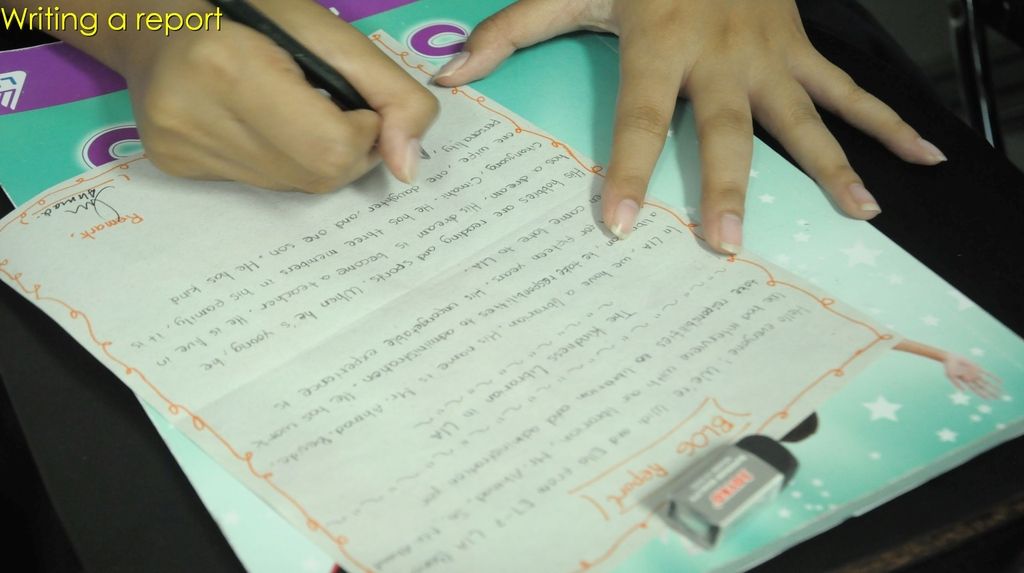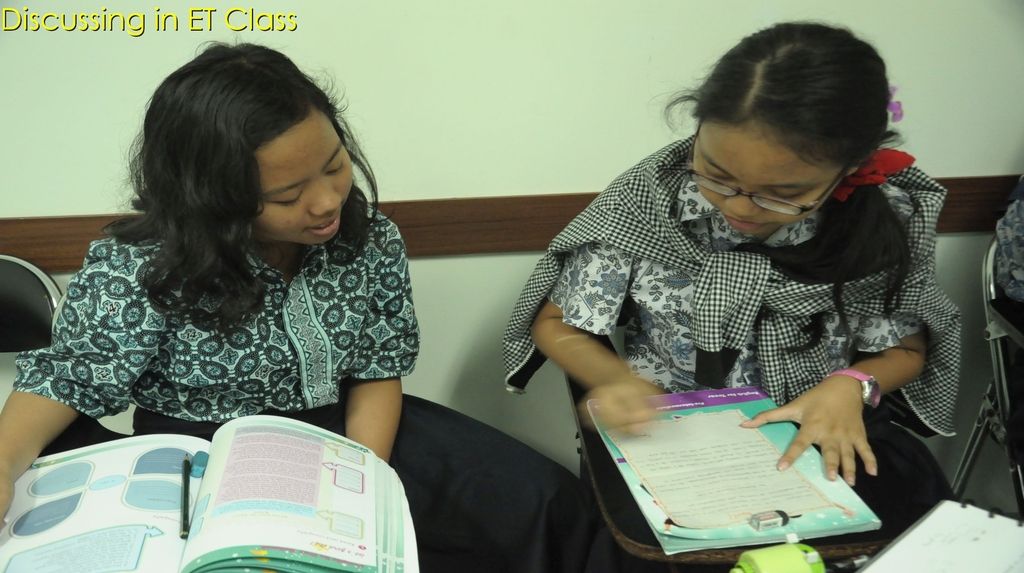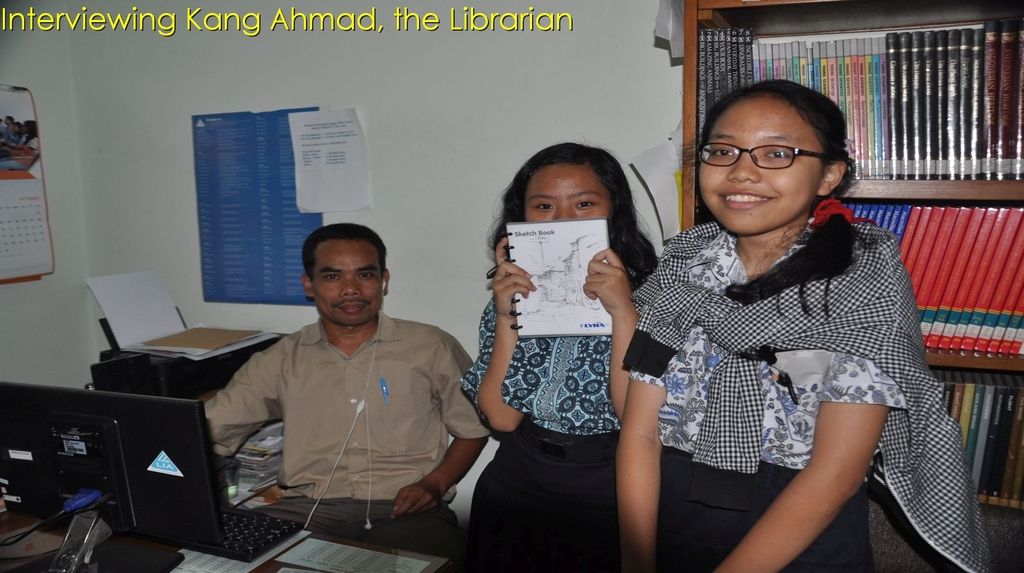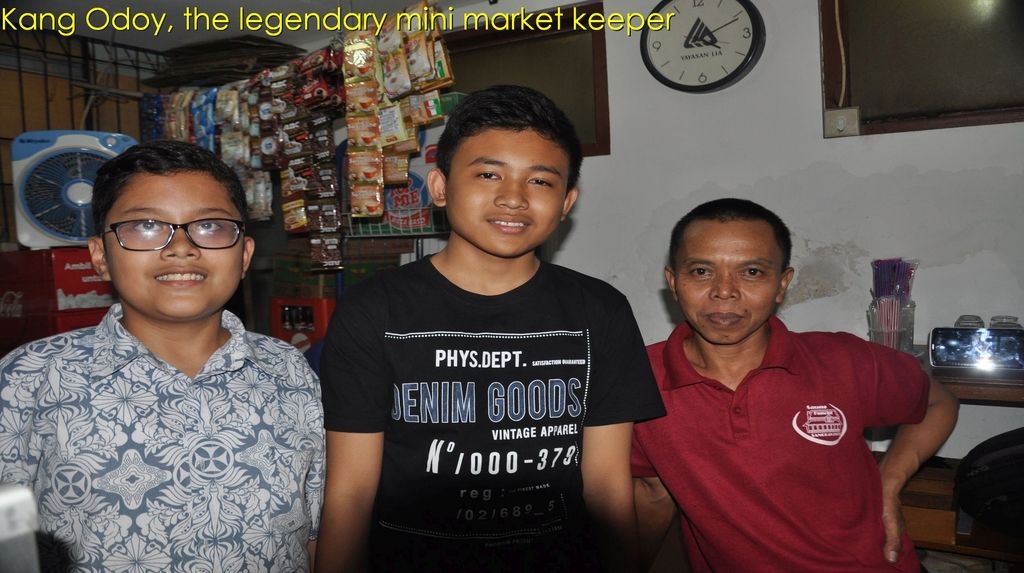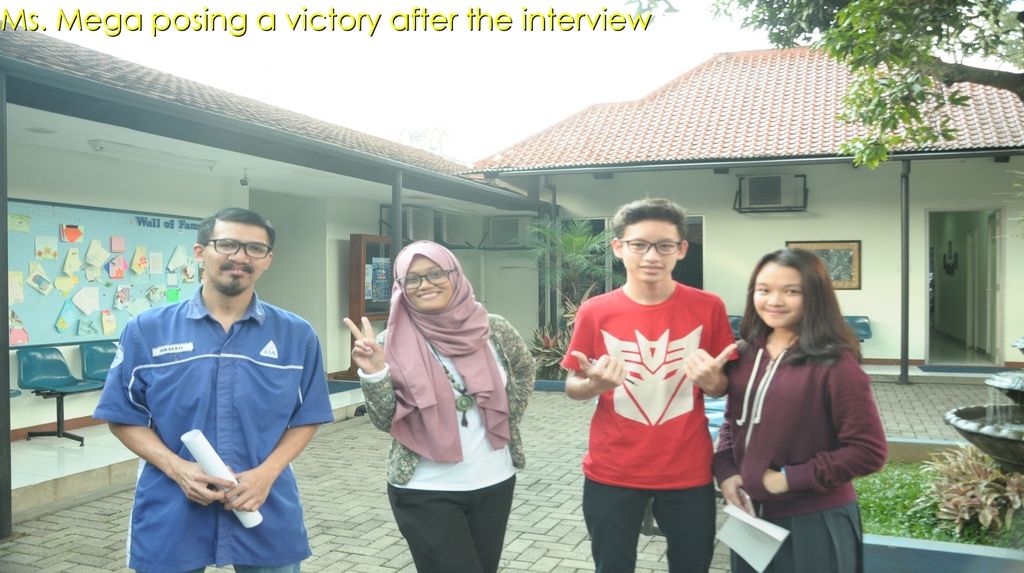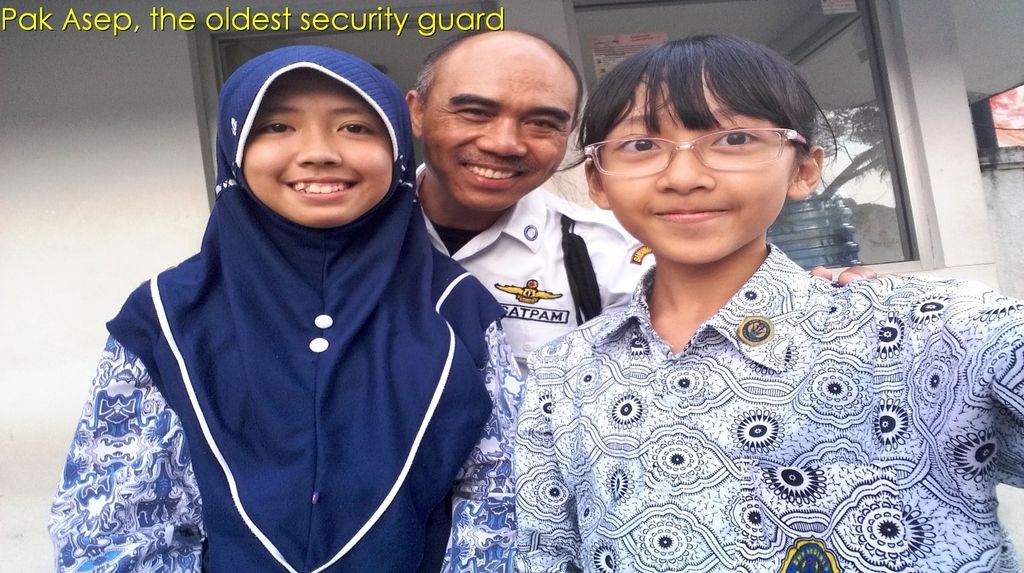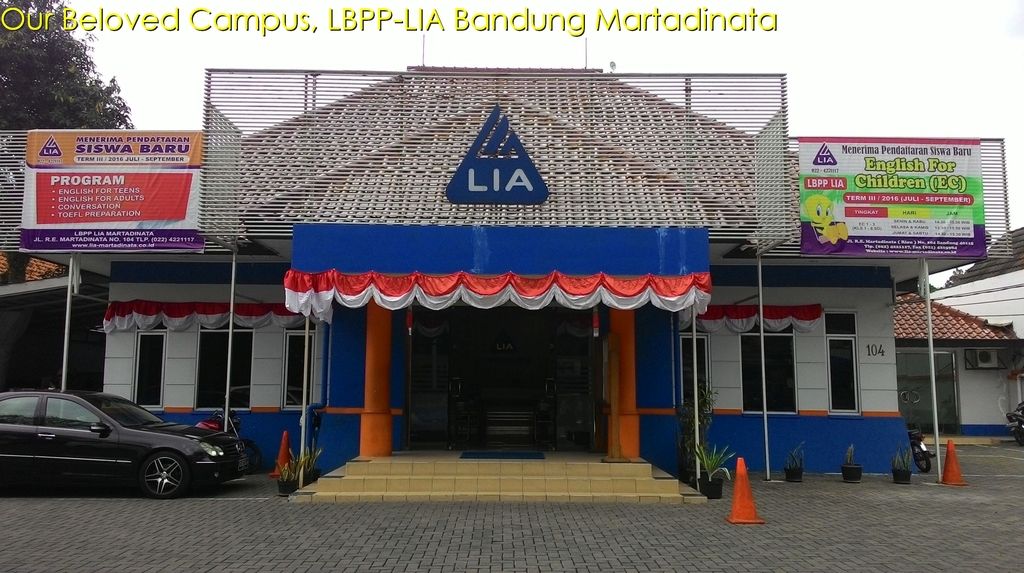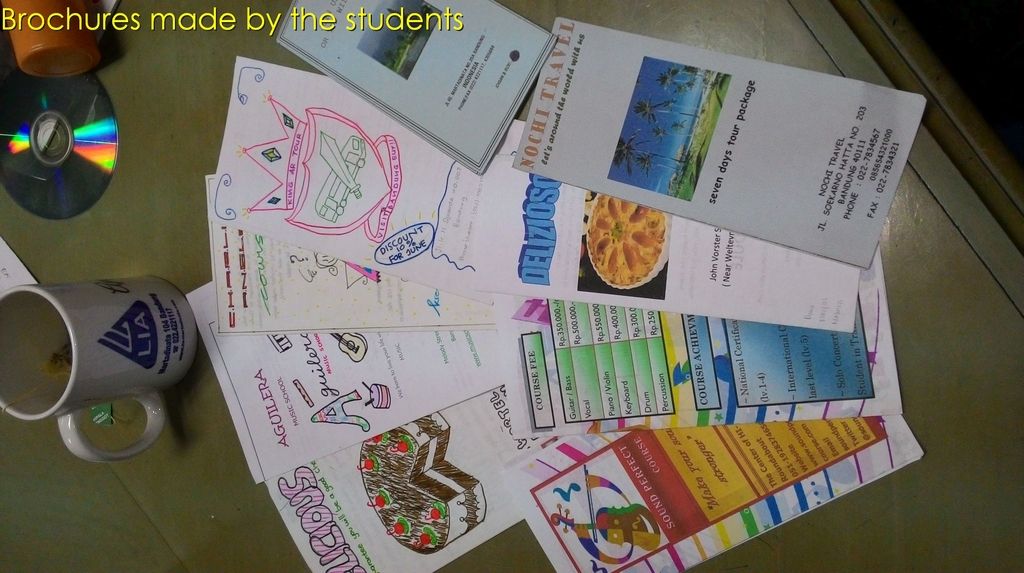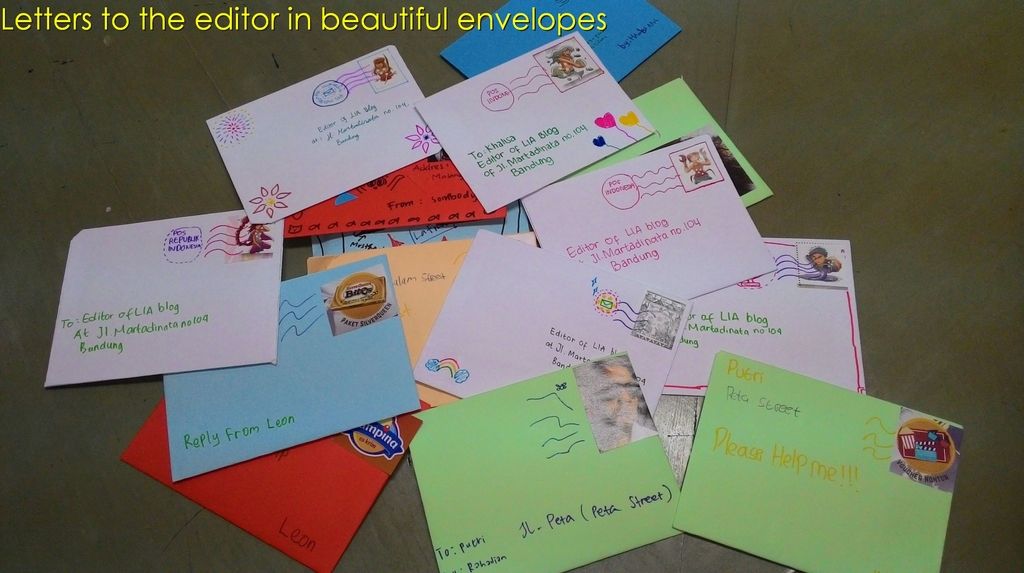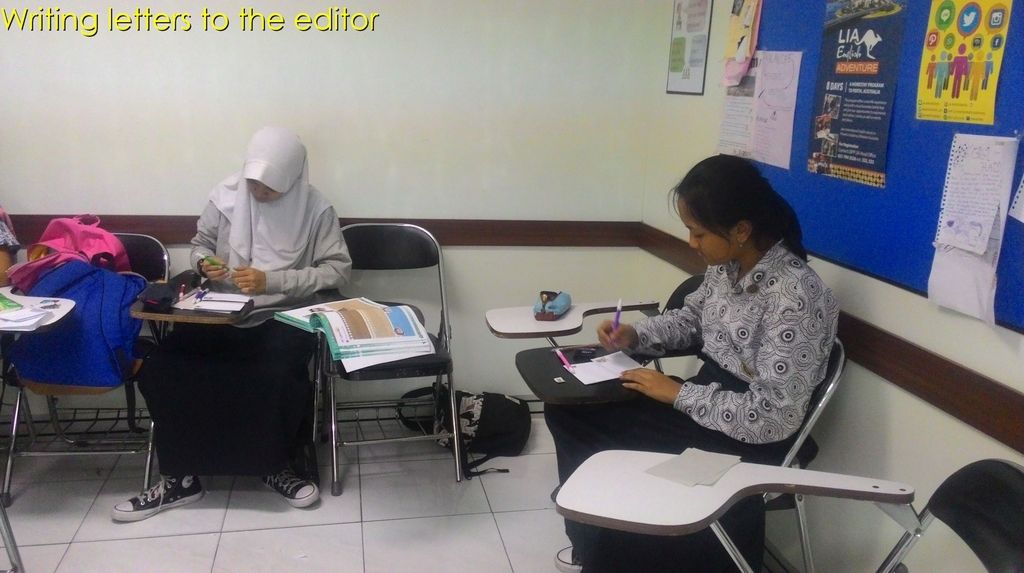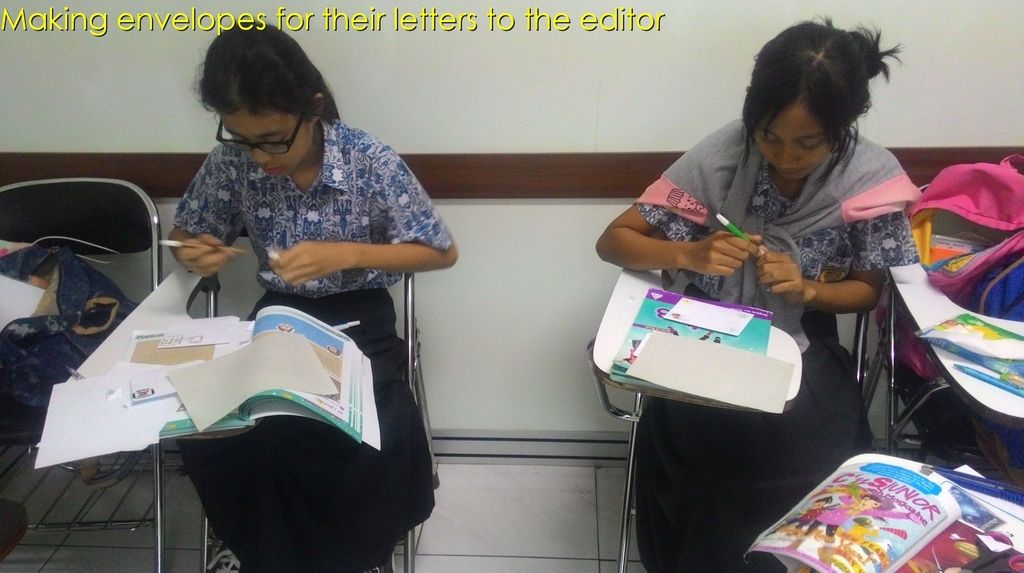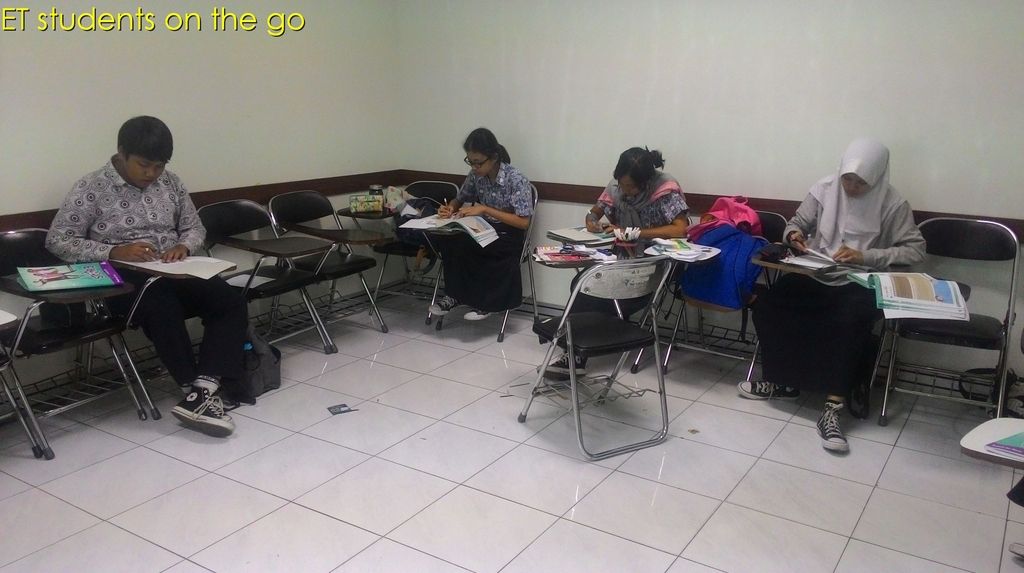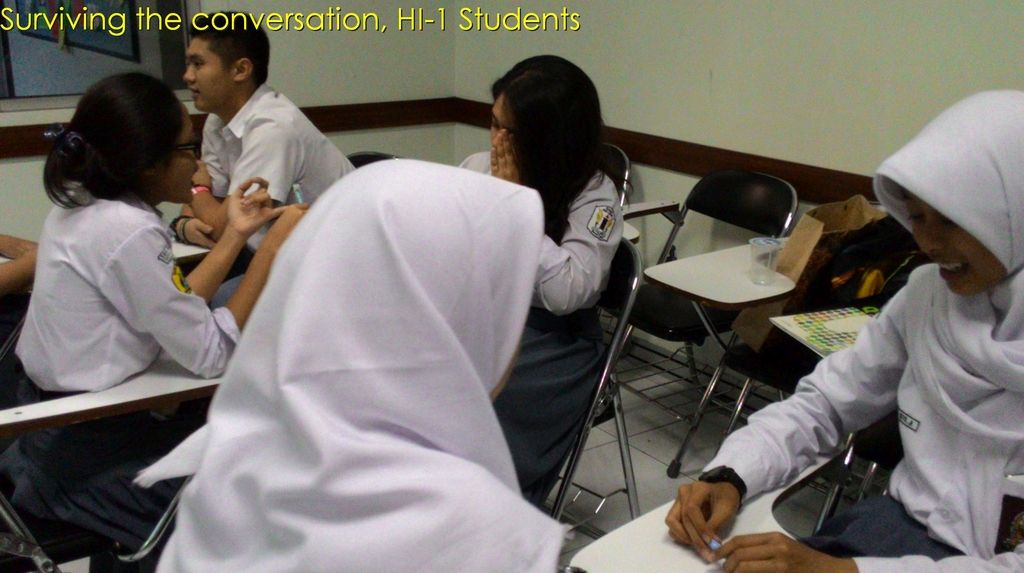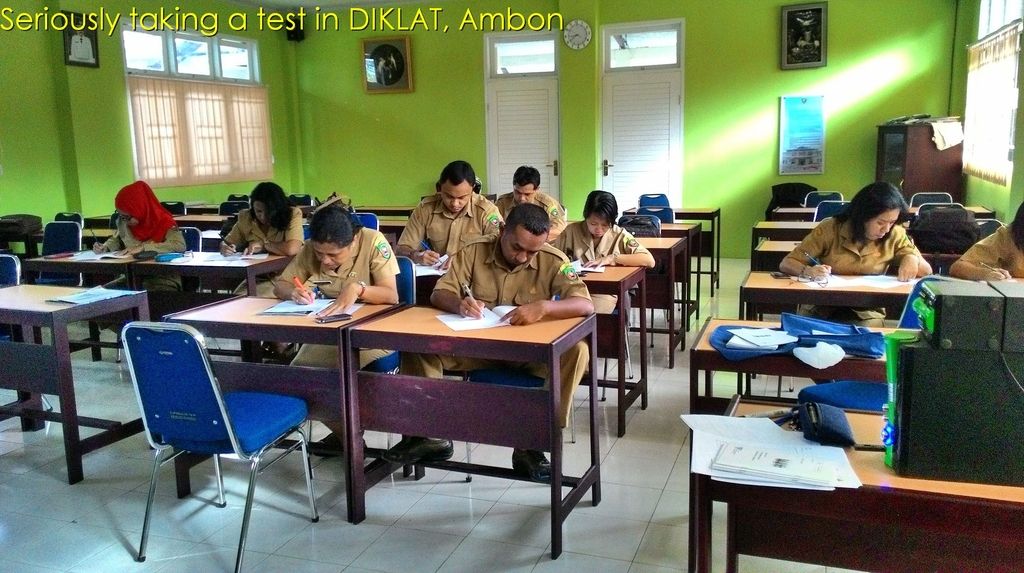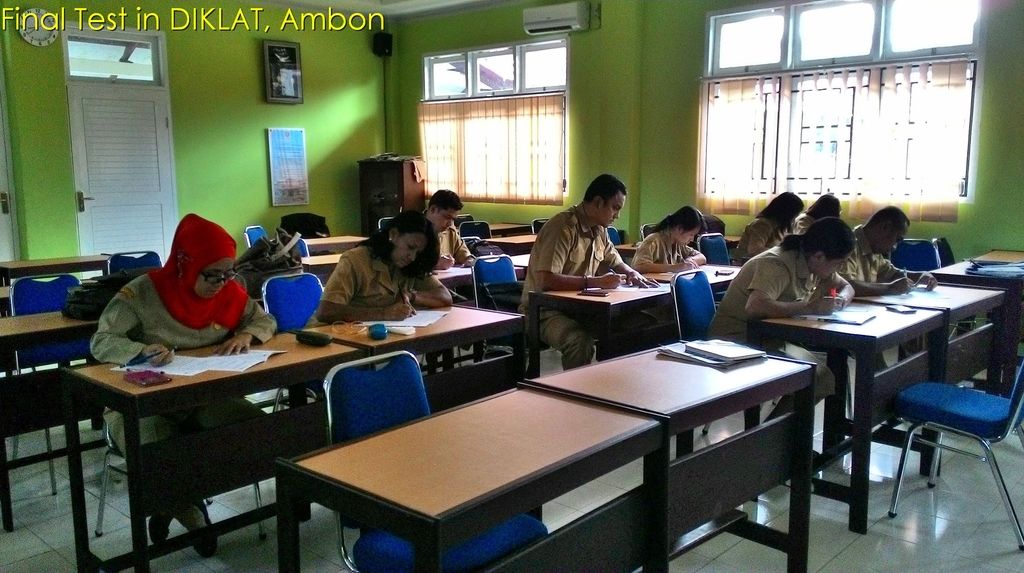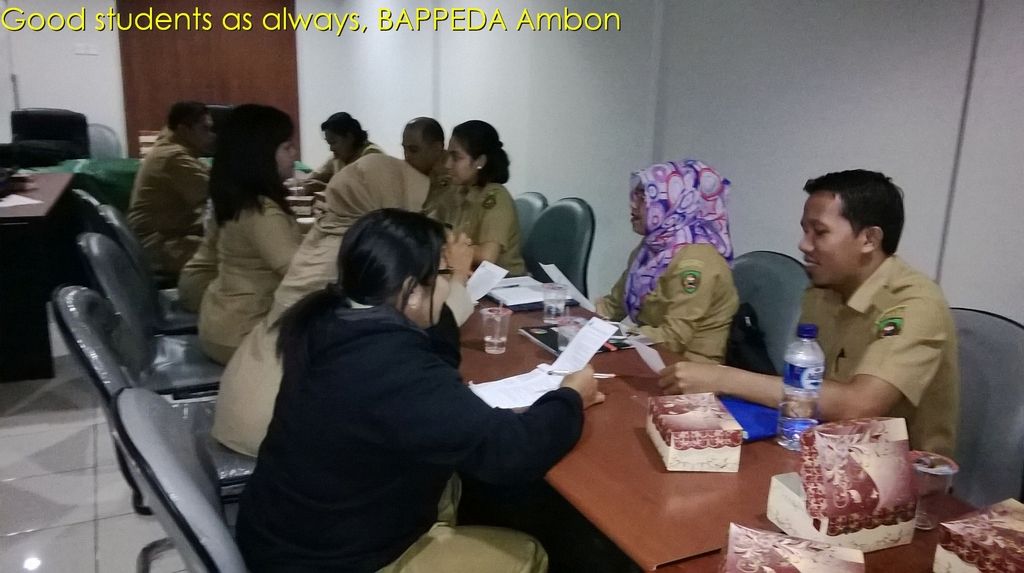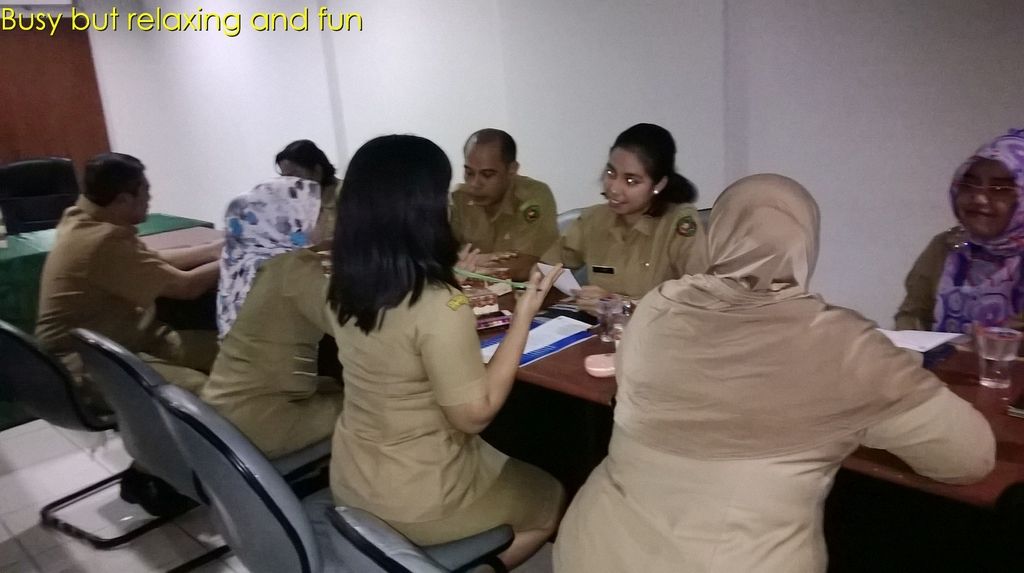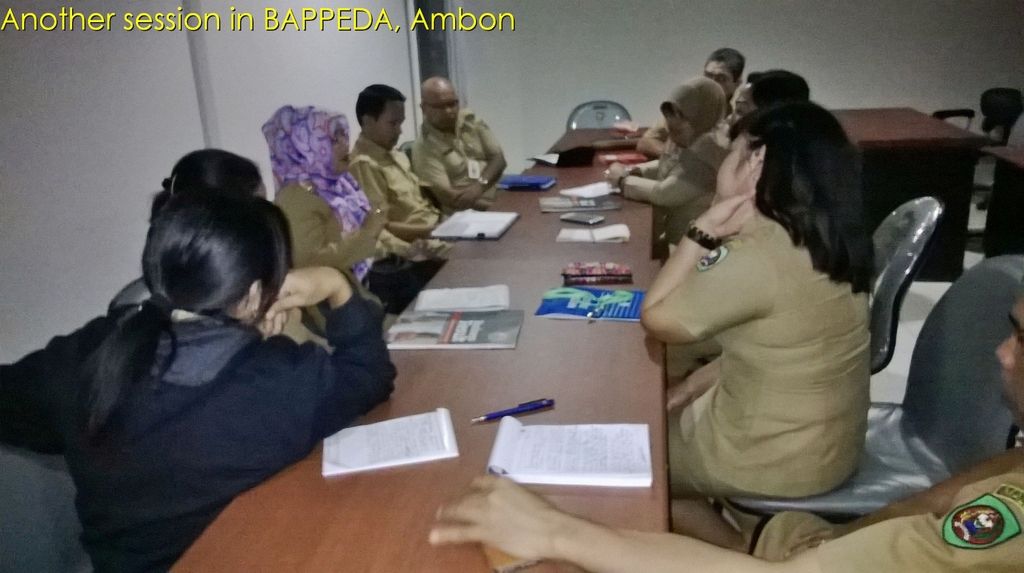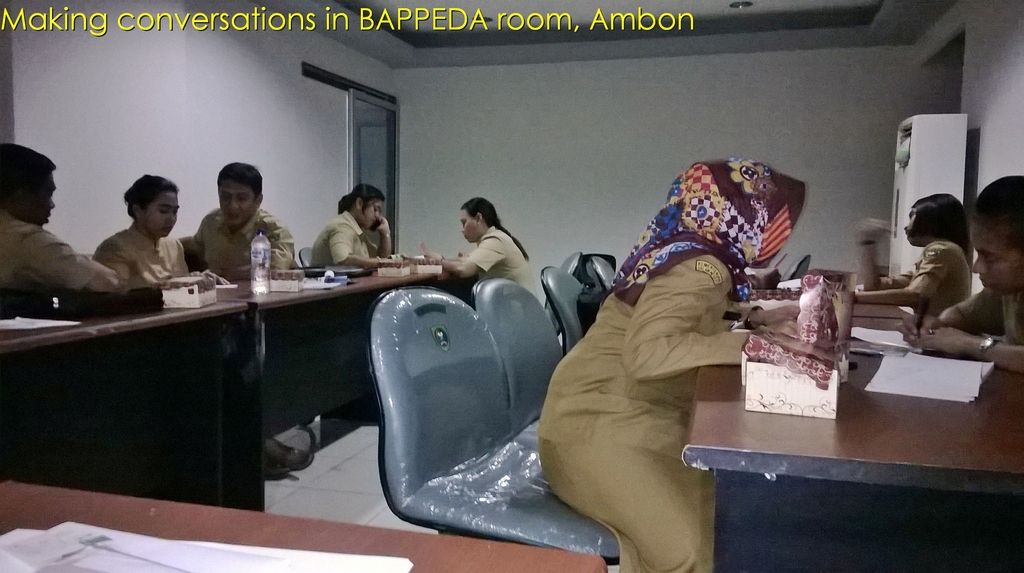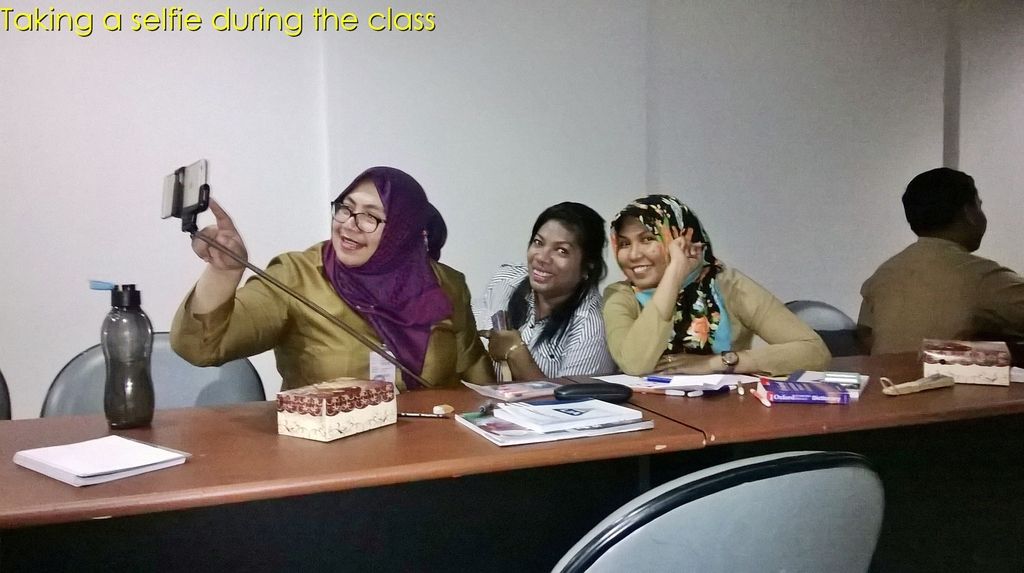Venue: Bappeda Meeting Room, Pemprov. Ambon
Date: 22 may 2015
Lesson: NEW IDEAS (Sharing Ideas: Each Group has a project; then they share it to other groups so as to see how feasible the project is. In the end, the students must decide whose project is the most feasible one.)
VIDEO 1
One of the students read a passage of unit 10 (New Ideas) of Business Result Book
Video 2
Another student read the continuing passage while the teacher listened and corrected her reading
Video 3
00:00—00:20 Suddenly,
there was an announcement announcing that all students must attend a ceremonial
meeting in an auditory room (Floor 7) in the same building. But the students
insisted on staying and studying. What a good class!
00:20—00:02 The
teacher opened continued his teaching while one of the students in the end of
the table was busy eating her lunch.
02:00—03:45 The
students do an exercise 2 of page 60 (Business Result Book/Intermediate Class)
03:45—finished The
teacher discussed the answers with the students. Furthermore, the teacher
bridged the lesson with “the project” that the students should create
The students were groupped into two groups (each consisted of 3 students). Each group would then compose 3 ideas (each would be presented by a member of the groups). The ideas are new ideas (hopefully) that would be discussed to see which of which was the most feasible one based on 3 standards: Time, Space, and Budget.
- Building underwater tunnel to connect people from Ambon city to Kota Jawa via Ambon Bay
- Off shore gas station for boats and ships on Ambon Bay
- Floating Restaurant in Amahusu, near Tirta Kencana Restaurant
- Fish chips market to make more income for traditional fishermen
- Building an artificial waterfall
- Sidewalks for pedestrians and joggers from Baguala Bay and all along Ambon Bay.
Video 4
00:00—12:25 The camera shut down, the battery was low. So we continued the recording using a cellphone camera. The discussion went on ......
Each member of the group (say Group A) would present an idea as many as three times to a different member of the other group (say Group B). The members of group B would also present their ideas. The idea sharing would take 20 minutes (each member had 10 minutes to explain his/her ideas). The whole discussion would take 60 minutes.
Video 5
Get back to video recorder while it was recharging……
00:00—00:08 Still discussing
08:00—changing partners
21:33—26:00 The teacher ask the students to discuss and
decide which project is the most feasible one to build. The most feasible idea
will have to overcome 3 limitations as follows:
TIME: sometimes the idea doesn’t belong to this time. If the technology isn’t supportive yet, an idea could not come into a reality. We don’t have the facilities to support the idea. We don’t have people who could carry out the idea.
SPACE: Do we have an empty space for the idea? Do we need a large space so large that it makes the idea impossible to realize?
BUDGET: Many times it becomes the key factor. No money, no dream will come true. Budget will become easy if there are some investors who would to invest their money into the projects. Is there any project which is the most interesting one to the investors?
One student added another limitation. He said it was GOVERNMENT POLICY.
Government policy: Is it easy to get the permission from the
government to make the project?
One group presented their decision: the other group is
listening and asking questions. The teacher is also asking questions. The second group did the same. The presentation and discussion took 30 minutes.

